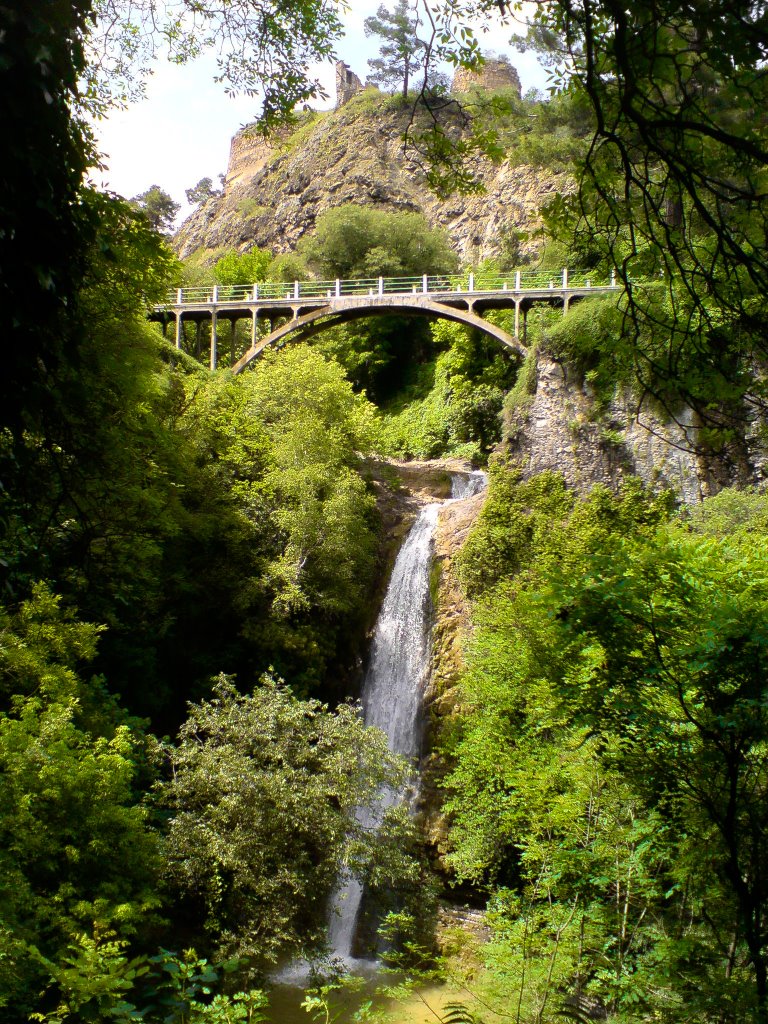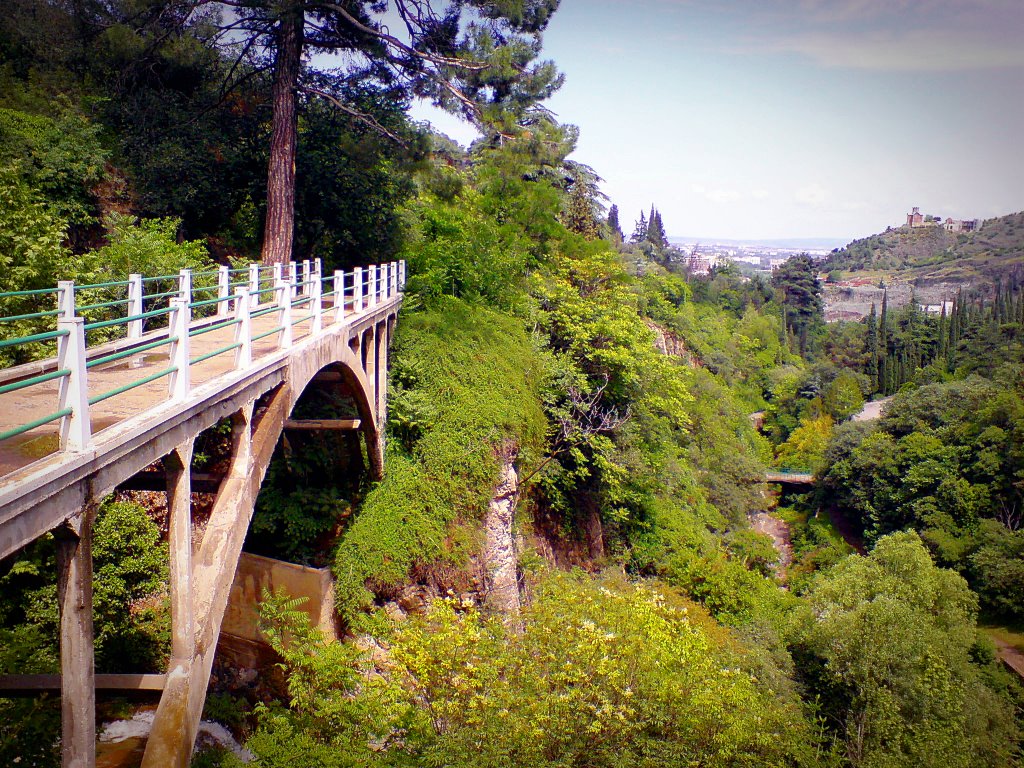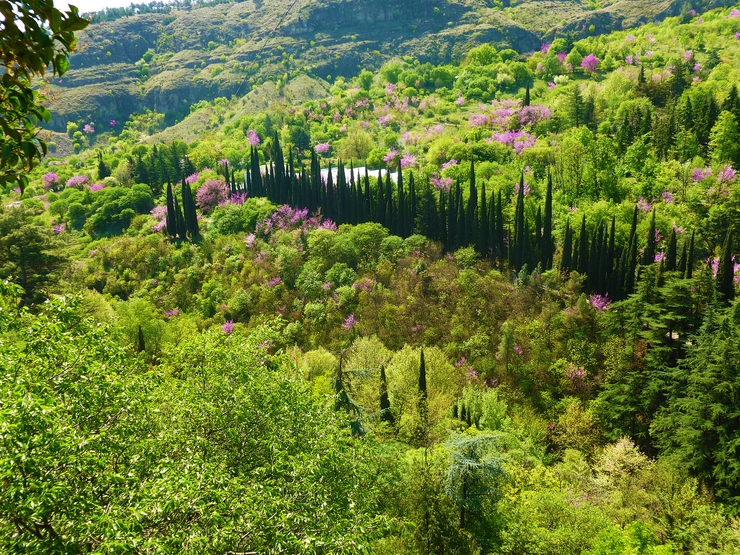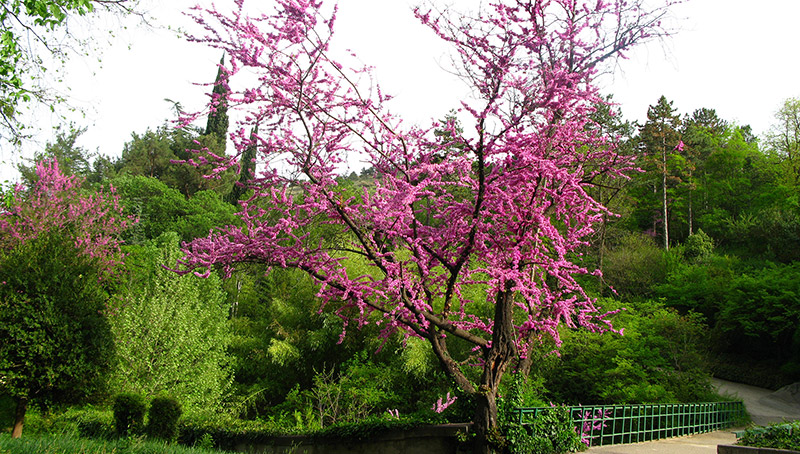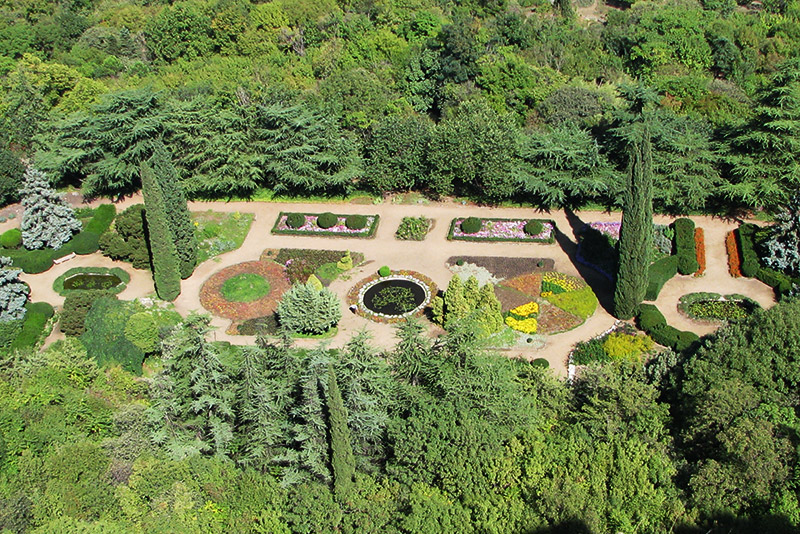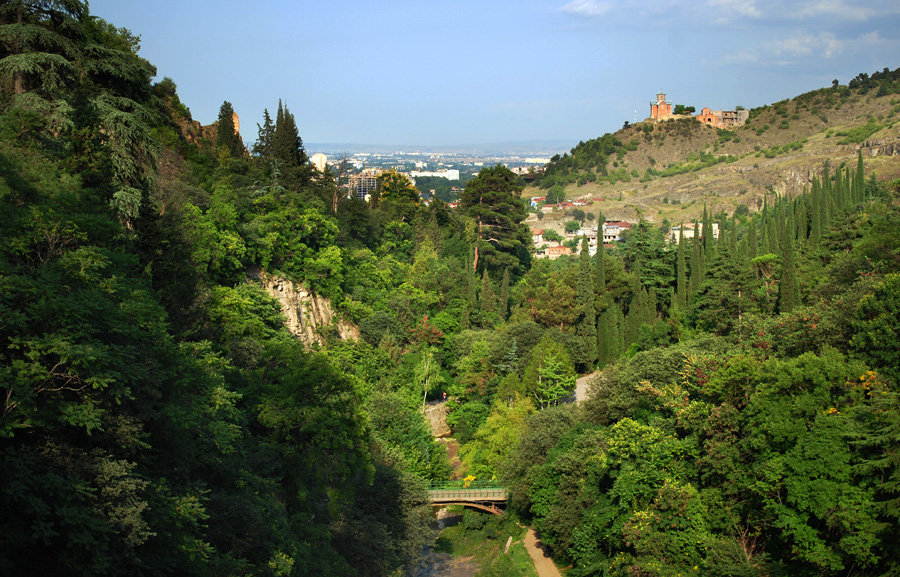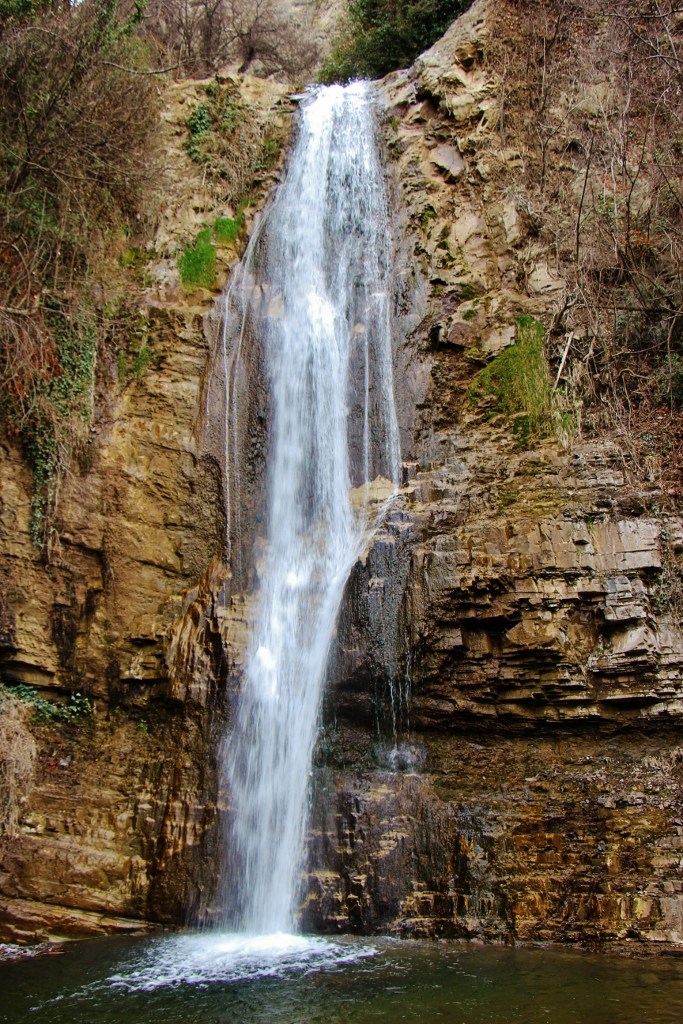The National Botanical Garden of Georgia, formerly the Tbilisi Botanical Garden, is a research, cultural-educational and nature conservation institution in Georgia. Located in the foothills of Narikala Castle in Tbilisi, it occupies an area of 161 hectares and possesses a collection of over 4,500 plant groups.
The Garden’s collection contains flora from the Caucasus region, China , the Himalayas, Japan, North America , Turkey, Siberia and the Mediterranean.
The Garden’s history spans more than three centuries. It was first described in 1671 by the French traveler Jean Chardin and is thought to have been founded as a royal garden in 1625. The gardens were pillaged during the Persian invasion of 1795 but restored in the early 19th century and officially established as the Tiflis Botanical Garden in 1845.
The Garden’s collection contains flora from the Caucasus region, China , the Himalayas, Japan, North America , Turkey, Siberia and the Mediterranean.
The Garden’s history spans more than three centuries. It was first described in 1671 by the French traveler Jean Chardin and is thought to have been founded as a royal garden in 1625. The gardens were pillaged during the Persian invasion of 1795 but restored in the early 19th century and officially established as the Tiflis Botanical Garden in 1845.

